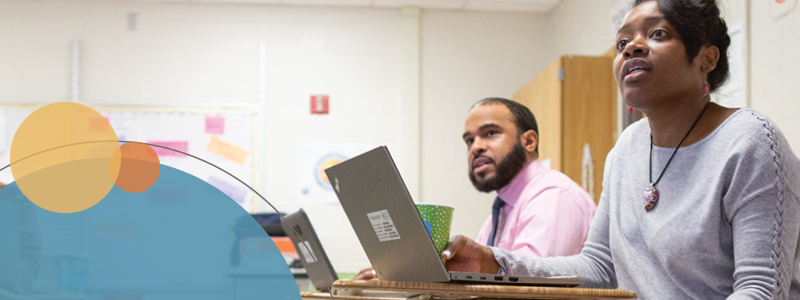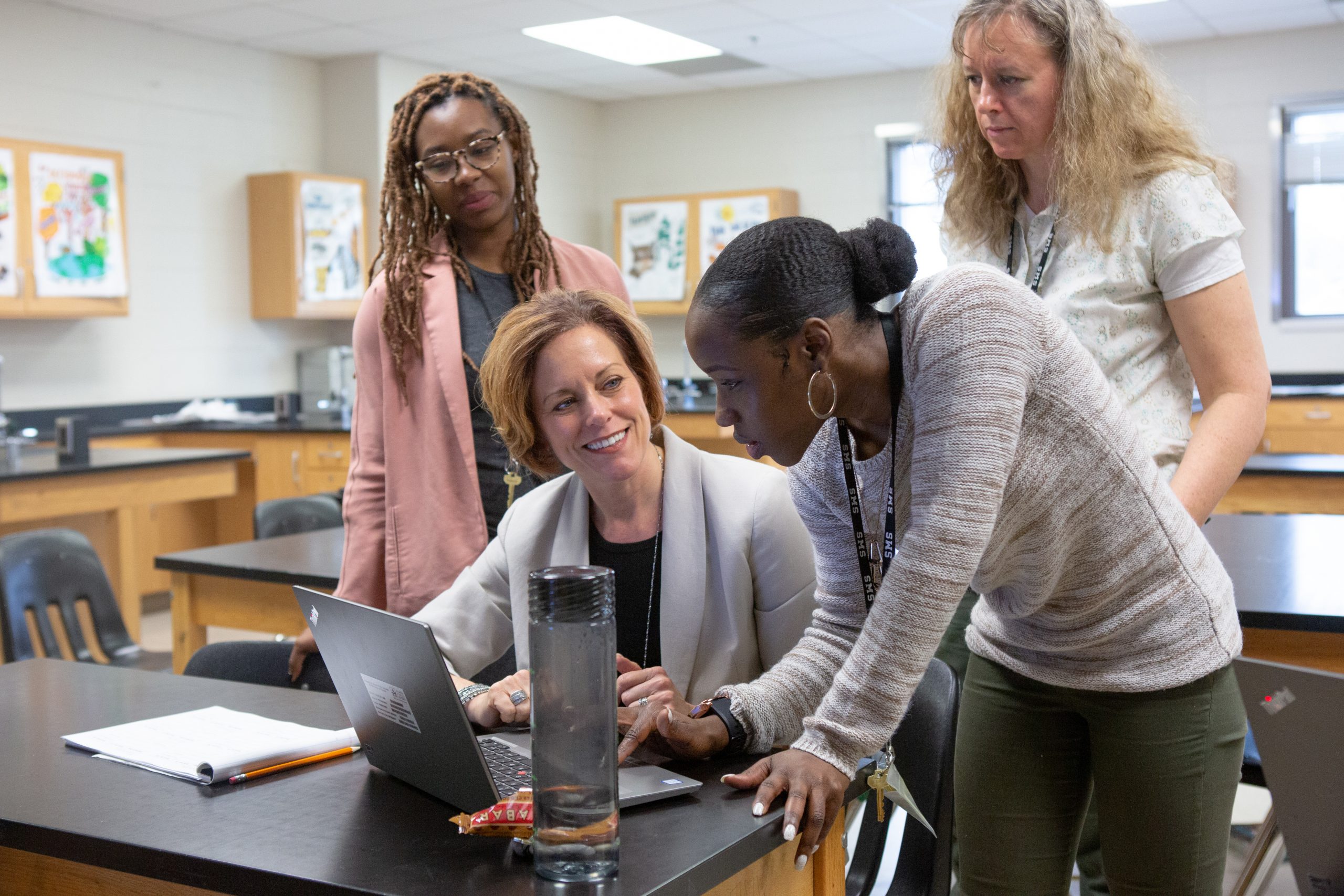January 6, 2021 • District Spotlight

In 2019, Peoria Unified School District (PUSD) began a district-wide PLC roll out to support teachers transitioning to new state science standards. The new standards pull largely from A Framework for K-12 Science Education and leverage student-driven, multidimensional learning. The goal of this initiative was to get teachers engaged in a PLC that supported the transition, provided a framework for ongoing collaboration, and gave teachers a chance to investigate bite-sized innovations that they could begin implementing in their classrooms right away.
In January, all 67 district high school science teachers participated in a 1-day training led by Judy Meredith, the district’s K–12 Science and Physical Education Curriculum Coach. In February, Judy held the same meeting for 78 middle school science teachers, and this spring, for K–12 Instructional Coaches so that they could also learn and support their teachers. The workshop set the stage for the upcoming PLC series and provided participants with the tools and supplies they needed moving forward.
Throughout the spring, teachers engaged in a series of self-facilitated PLC meetings on topics focused around new Arizona Science Standards implementation, phenomena-based instruction, and productive classroom culture. Each PLC gave teachers the chance to dive deeply into a topic and make a plan for implementing new practices in their classroom. When teachers met the next time, they shared their experiences, celebrated successes, and worked together to strategize solutions to challenges.
Teachers used to look at the standards like a checklist. They didn’t know how to read the new standards, much less teach in this new way. The PLCs have been a great chance for teachers to explore the standards piece by piece, and begin to implement changes in their classroom.
Judy Meredith
K–12 Science and Physical Education curriculum coach, Peoria Unified School district
Of course, there were struggles along the way, but a semester into the rollout there’s a lot of momentum and excitement to keep going. Judy attributes the success to several factors:
- The PLCs were accessible. Teachers were given the chance to choose which location was easiest for them, and the PLCs were held at a variety of times making it easier for teachers to attend. The sessions occurred during the district’s Modified Mondays Professional Development times.
- The PLCs were relevant. Teachers really valued the chance to collaborate around topics that were directly connected to their classroom, and that the PLCs focused on bite-sized practices that were easily implemented.
- The PLCs were well supported. Teachers were given all the materials needed to host their PLCs — they didn’t need to source anything themselves. Each PLC also had a designated lead teacher whose role was to share challenges and questions with Judy so that they could be addressed.
- The PLCs were fun! Each PLC session kicked off with an engaging phenomena-based exploration to help teachers transition from the school day to their collaborative time together.
This fall, teachers will continue their PLC journey. The middle and high school teachers will dive into new topics including exploratory and explanatory discourse, formative assessment, and engineering. The hope is to roll out this PLC initiative to K-5 teachers during the 2019-20 school year. We look forward to hearing more about what they’re learning!
This post was written by Jennifer Mendenhall based on an interview with Judy Meredith. As part of the PLC initiative described in this post, Peoria Unified School District was granted access to the Classroom Innovations PLC materials. Access to these materials was made possible through the project’s Investing in Innovation (i3) grant funds dedicated to scaling the Making Sense of SCIENCE professional development model.

